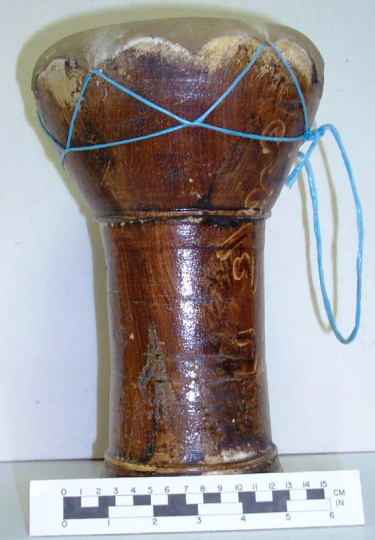Palestinian Drum

This type of Middle Eastern goblet drum is used across the region and is referred to by many names: tabla/tablah, darbouka/darboukah/darbukkah/derbouka, or tombek/doumbek. This example is Palestinian and was made in Jordan in the 20th century. The body of the drum is wheel-thrown glazed ceramic with a stretched animal hide creating the drum head. A piece of plastic twine is used to attached the hide and tighten it as needed. In general, this style of drum is held under one arm or laid on its side over one leg to be played. This example is made in the Egyptian style, which means that it has rounded edges on the head, as compared to the Turkish style which has a raised rim. The different designs allow for slight variations in the playing technique.
This Palestinian drum was made to be used in wedding ceremonies. The glaze shows hand prints and the Arabic word “Mabruk,” which means congratulations, especially in the context of a wedding. The drum is used as accompaniment to dabke, a folk circle dance that is traditionally performed at Arabic weddings and other joyous occasions.
Another object from Jordan that has been featured for Artifact of the Month is a Bedouin Rug.

